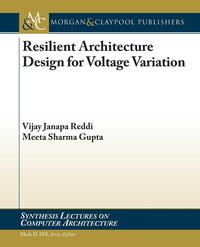Shrinking feature size and diminishing supply voltage are making circuits sensitive to supply voltage fluctuations within the microprocessor, caused by normal workload activity changes. If left unattended, voltage fluctuations can lead to timing violations or even transistor lifetime issues that degrade processor robustness. Mechanisms that learn to tolerate, avoid, and eliminate voltage fluctuations based on program and microarchitectural events can help steer the processor clear of danger, thus enabling tighter voltage margins that improve performance or lower power consumption. We describe the problem of voltage variation and the factors that influence this variation during processor design and operation. We also describe a variety of runtime hardware and software mitigation techniques that either tolerate, avoid, and/or eliminate voltage violations. We hope processor architects will find the information useful since tolerance, avoidance, and elimination are generalizable constructs that can serve as a basis for addressing other reliability challenges as well. Table of Contents: Introduction / Modeling Voltage Variation / Understanding the Characteristics of Voltage Variation / Traditional Solutions and Emerging Solution Forecast / Allowing and Tolerating Voltage Emergencies / Predicting and Avoiding Voltage Emergencies / Eliminiating Recurring Voltage Emergencies / Future Directions on Resiliency Это и многое другое вы найдете в книге Resilient Architecture Design for Voltage Variation (Vijay Janapa Reddi)
Resilient Architecture Design for Voltage Variation Vijay Janapa Reddi
Подробная информация о книге «Resilient Architecture Design for Voltage Variation Vijay Janapa Reddi». Сайт не предоставляет возможности читать онлайн или скачать бесплатно книгу «Resilient Architecture Design for Voltage Variation Vijay Janapa Reddi»
